#indigenous caribbean
Text

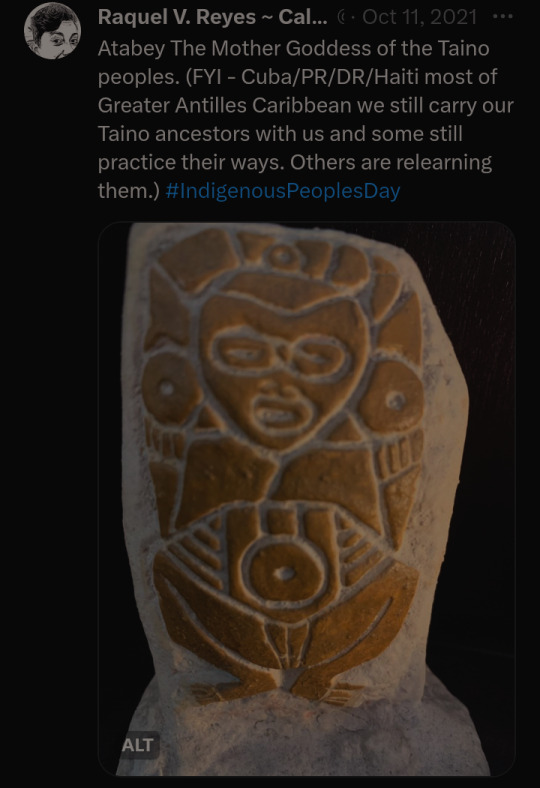
Indig
#indigenous#indigenous people#indigenous peoples day#indigenous caribbean#taino#greater antilles#haiti#cuba#puerto rico#republica dominicana#dominican republic#caribbean creatives
44 notes
·
View notes
Photo

Nona Aquan, Carib Trinidadian
#Nona Aquan#Carib#Trinidad#Trinidad and Tobago#Trinidadian#Tobago#Caribbean#West Indies#Indigenous#First Peoples#West Indian#Arima#Arima's First Peoples#Indigenous Caribbean#Native Trinidadian#Native Caribbean
102 notes
·
View notes
Text
In fact, far more Asian workers moved to the Americas in the 19th century to make sugar than to build the transcontinental railroad [...]. [T]housands of Chinese migrants were recruited to work [...] on Louisiana’s sugar plantations after the Civil War. [...] Recruited and reviled as "coolies," their presence in sugar production helped justify racial exclusion after the abolition of slavery.
In places where sugar cane is grown, such as Mauritius, Fiji, Hawaii, Guyana, Trinidad and Suriname, there is usually a sizable population of Asians who can trace their ancestry to India, China, Japan, Korea, the Philippines, Indonesia and elsewhere. They are descendants of sugar plantation workers, whose migration and labor embodied the limitations and contradictions of chattel slavery’s slow death in the 19th century. [...]
---
Mass consumption of sugar in industrializing Europe and North America rested on mass production of sugar by enslaved Africans in the colonies. The whip, the market, and the law institutionalized slavery across the Americas, including in the U.S. When the Haitian Revolution erupted in 1791 and Napoleon Bonaparte’s mission to reclaim Saint-Domingue, France’s most prized colony, failed, slaveholding regimes around the world grew alarmed. In response to a series of slave rebellions in its own sugar colonies, especially in Jamaica, the British Empire formally abolished slavery in the 1830s. British emancipation included a payment of £20 million to slave owners, an immense sum of money that British taxpayers made loan payments on until 2015.
Importing indentured labor from Asia emerged as a potential way to maintain the British Empire’s sugar plantation system.
In 1838 John Gladstone, father of future prime minister William E. Gladstone, arranged for the shipment of 396 South Asian workers, bound to five years of indentured labor, to his sugar estates in British Guiana. The experiment with “Gladstone coolies,” as those workers came to be known, inaugurated [...] “a new system of [...] [indentured servitude],” which would endure for nearly a century. [...]
---
Bonaparte [...] agreed to sell France's claims [...] to the U.S. [...] in 1803, in [...] the Louisiana Purchase. Plantation owners who escaped Saint-Domingue [Haiti] with their enslaved workers helped establish a booming sugar industry in southern Louisiana. On huge plantations surrounding New Orleans, home of the largest slave market in the antebellum South, sugar production took off in the first half of the 19th century. By 1853, Louisiana was producing nearly 25% of all exportable sugar in the world. [...] On the eve of the Civil War, Louisiana’s sugar industry was valued at US$200 million. More than half of that figure represented the valuation of the ownership of human beings – Black people who did the backbreaking labor [...]. By the war’s end, approximately $193 million of the sugar industry’s prewar value had vanished.
Desperate to regain power and authority after the war, Louisiana’s wealthiest planters studied and learned from their Caribbean counterparts. They, too, looked to Asian workers for their salvation, fantasizing that so-called “coolies” [...].
Thousands of Chinese workers landed in Louisiana between 1866 and 1870, recruited from the Caribbean, China and California. Bound to multiyear contracts, they symbolized Louisiana planters’ racial hope [...].
To great fanfare, Louisiana’s wealthiest planters spent thousands of dollars to recruit gangs of Chinese workers. When 140 Chinese laborers arrived on Millaudon plantation near New Orleans on July 4, 1870, at a cost of about $10,000 in recruitment fees, the New Orleans Times reported that they were “young, athletic, intelligent, sober and cleanly” and superior to “the vast majority of our African population.” [...] But [...] [w]hen they heard that other workers earned more, they demanded the same. When planters refused, they ran away. The Chinese recruits, the Planters’ Banner observed in 1871, were “fond of changing about, run away worse than [Black people], and … leave as soon as anybody offers them higher wages.”
When Congress debated excluding the Chinese from the United States in 1882, Rep. Horace F. Page of California argued that the United States could not allow the entry of “millions of cooly slaves and serfs.” That racial reasoning would justify a long series of anti-Asian laws and policies on immigration and naturalization for nearly a century.
---
All text above by: Moon-Ho Jung. "Making sugar, making 'coolies': Chinese laborers toiled alongside Black workers on 19th-century Louisiana plantations". The Conversation. 13 January 2022. [All bold emphasis and some paragraph breaks/contractions added by me.]
457 notes
·
View notes
Text
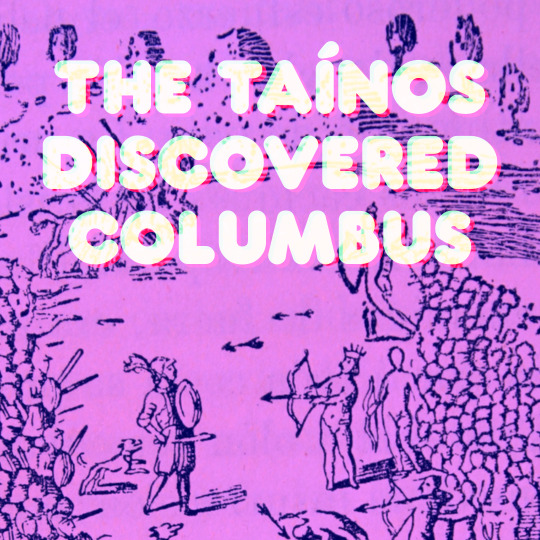
On October 12, 1492, Columbus arrived on the shores of the Caribbean, the now-called Bahamas, and the Taíno people welcomed him and his crew with respect and great care. Their kindness was repaid with vicious cruelty and enslavement.
The horrors of genocide left no one untouched on Turtle Island and Abya Yala, but the Taínos were the first to encounter this scourge. There aren't enough people who call them by name and claim a ubiquitous "indigenous peoples" encountered Columbus.
Know and name the Taíno and the ways they suffered as a result of First Contact.
And also the ways they have persisted and survived to this day. Check out the United Confederation of Taíno People (UCTP) / Confederación Unida De El Pueblo Taíno (CUPT) as a place to start.

The Taino peoples are not a monolith and include many different tribes and areas.
Image 1: Cristobal Colón, 1893 "La gran batalla que tuvo el almirante con el Rey Guarionex y cien mil indios en la Vega Real" | Wikipedia
Image 2: "Distribución de los arahuacos taínos, caribes y guanahatabeyes en las Antillas, en el tiempo de la llegada de los españoles." | Wikipedia
#indigenous peoples day#indigenous history#taino#tainos#taino culture#indigenous erasure#christopher columbus#caribbean indigenous#fuck columbus#1492#ndn tumblr#ndn tag#ndn country#ndn#native american#first nations#turtle island#abya yala#indigenous people#indigenous
2K notes
·
View notes
Text

Basalt sculpture of the Taino people of the Caribbean, representing a zemi (deity or another supernatural being), perhaps Maquetaurie Guayaba, lord of the Land of the Dead. Artist unknown; between 800 and 1500. Now in the Walters Art Museum, Baltimore. Photo credit: Walters Art Museum.
#Indigenous Peoples Day#art#art history#indigenous peoples#indigenous art#Taino#Caribbean art#Taino art#Pre-Columbian#sculpture#stonework#basalt#indigenous religions#Walters Art Museum
208 notes
·
View notes
Text
Time Travel Question 48: Early Modernish and Earlier 3
These Questions are the result of suggestions a the previous iteration.This category may include suggestions made too late to fall into the correct earlier time grouping. In some cases a culture lasted a really long time and I grouped them by whether it was likely the later or earlier grouping made the most sense with the information I had. (Invention ofs tend to fall in an earlier grouping if it's still open. Ones that imply height of or just before something tend to get grouped later, but not always. Sometimes I'll split two different things from the same culture into different polls because they involve separate research goals or the like).
Please add new suggestions below if you have them for future consideration. All cultures and time periods welcome.
#Time Travel#Paracelsus#Early Modern#Precolonization#Indigenous Cultures#Aphra Behn#Il Sodoma#Art History#Theater History#Espionage#The Man in the Iron Mask#Yellowstone#Indigenous History#18th Century#17th Century#Serial Killer#Nursery Rhymes#Nanny of the Maroons#Escaped Slaves#Jamaica#1600s#1700s#Caribbean History#Black Women's History#Black History#Women's History#Ediacaran Era#Neoproterozoic Era#Ancient Iberian Cultures#Iberian History
61 notes
·
View notes
Text
"We are thrilled to announce the launch of the Garifuna International Indigenous Film Festival (GIIFF) on November 9th-November 12th, 2023, a groundbreaking initiative dedicated to supporting and preserving the Garifuna nation and all indigenous cultures being held at the Electric Lodge located in Venice, California.
This unique film festival will create a platform for filmmakers, artists, and community leaders/members to showcase their works while emphasizing the importance of cultural diversity and representation. The Garifuna people, originating from the Caribbean Island of St. Vincent, possess a rich tradition and enduring heritage that deserves global recognition. The Garifuna International Indigenous Film Festival aims to bring this vibrant culture to the forefront and shed light on the struggles and triumphs of the Garifuna nation and other indigenous communities worldwide.
The underlying objective of GIIFF is to promote a deeper understanding and appreciation of indigenous traditions, values, and stories. Through the power of film, GIIFF aims to bridge gaps, foster dialogue, and debunk stereotypes surrounding indigenous cultures.
This multidisciplinary approach will not only provide a unique experience for audiences, but it will also contribute to the preservation of cultural heritage for future generations.
GIIFF will feature a diverse selection of thought provoking-international films, documentaries, workshops, cultural presentations, and short films that center around indigenous cultures. The festival strives to create an inclusive space, where filmmakers and artists can engage with industry leaders, intellectuals, and audiences who share a passion for the sense of community and collaboration, encouraging meaningful conversations and connections.
This inclusive space not only allows industry leaders and intellectuals to engage with these powerful stories but also invites audiences from all walks of life to immerse themselves in the beauty and diversity of indigenous cultures. The GIIFF is more than just a film festival; it is a celebration of heritage, resilience, and the power of storytelling."
-via Garifuna Indigenous Film Festival, October 2023
#indigenous#first nations#indigenous peoples#indigenous history#garifuna#caribbean#carribbean#film festival#los angeles#st. vincent#cultural heritage#documentaries#good news#hope
130 notes
·
View notes
Text

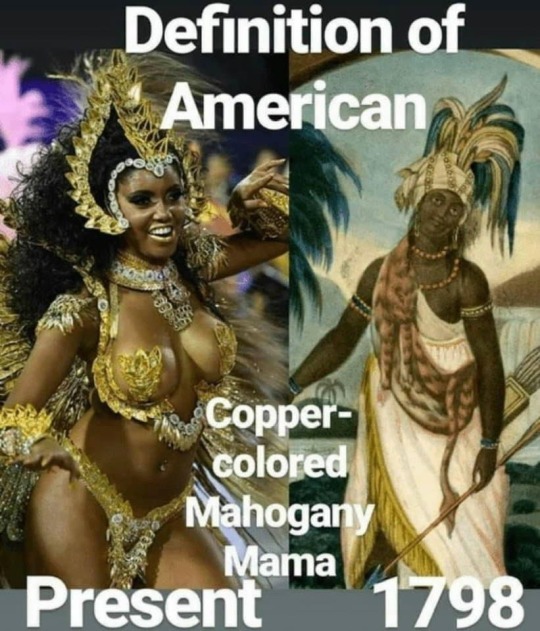
53 notes
·
View notes
Text






I am great headman Ghan-buri-ghan. I count many things; leaves on trees, stars in the sky, men in the dark. Wild Men are wild, free; but not children.
Part 12 of toi's indigenous tolkien series
images:
1. Telhueche man Rubén Patagonia. Text = I am great headman Ghan-buri-Ghan
2. Waterfall in Valdivian rainforest. Text = I count many things
3. A leaf over a different picture of the same forest. Text around the leaf = leaves on trees
4. the Milky Way over South American desert. In the middle are cartoon white stars and text around them = stars in sky
5. people around a fire, text = men in the dark.
6. Rubén Patagonia and text = Wild Men are wild, free; but not children.
#ghan buri ghan#lotr#the third age#mepoc#latam + caribbean tolkien#indigenous americas tolkien#moodboards and edits#toi's indigenous tolkien series#toi's creations#contains image description#userindomiel#tuserosie#userlyndeth
178 notes
·
View notes
Text
#our race#race#black#ebony#negro#negrito#swarthy#moor#enslaved#freedmen#africa#caribbean islands#caribbean#south america#central america#indigenous#indigenous to the world#native#native americans#indigenous people#indigenous history#first nations#afro latinas#afro latinos#one drop rule#our land#racism#discrimination#classism#oppression
52 notes
·
View notes
Text
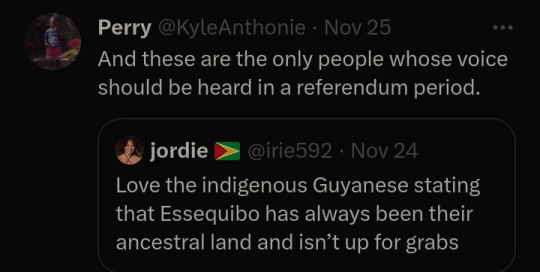
#guyana#indigenous#indigenous caribbean#indigenous guyanese#disputed territories#venezuela#essequibo
18 notes
·
View notes
Text
Swamp Witch Travels: The Everglades
The Seminole War that never ended, a charm to Split a Storm and an Ancient Island. For centuries, the Everglades has been the object of wonder of many influential Floridian figures who each recognized its immense beauty and power. This River of Grass is a major center of life and biodiversity, as well as mysteries and Spirits uncharted, but will it still be around for the Swamp Witches of tomorrow?
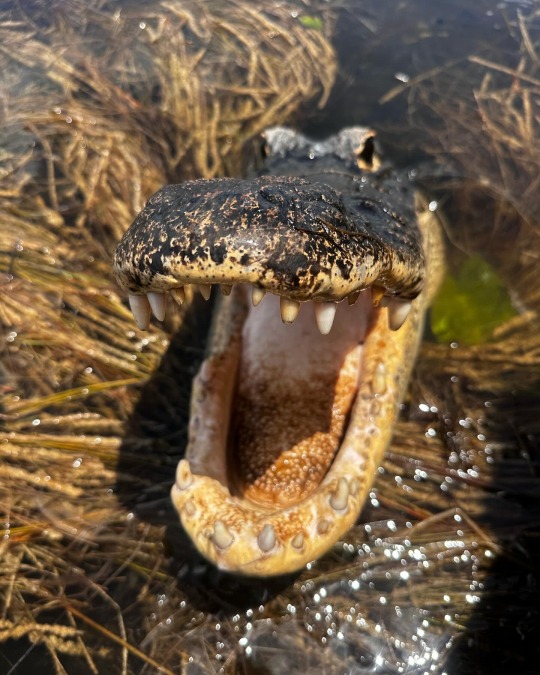
The Everglades is going to shatter all of your preconceived notions about Swamps. It is a place of great power and duality. On one hand, this aqueous Land is covered in sparkling, clear, MOVING water. This water is the Life and Blood of the state, flowing from the Heart of the Everglades, Okechobee (Big Lake) The health of this ecosystem in turn affects the entire country. On the other hand, a place of Danger, Death and Rot, but for the purpose of Cleansing and Purification (not just rot for rot’s sake). As the water flows through this vast ecosystem, it is cleared of pollutants by plants and limestone while washing away scars left by man on this Land, until all is returned anew. It is a multifaceted, firm but gentle Spirit.
The Everglades is a union, a pact almost, between the Land and the Water to form the Swamp we know and love.
I am no stranger to the Glades. I was born and raised in the western Everglades, in the Big Cypress water basin. Fakahatchee and Picayune Strand were favorites of my parents as I was growing up, and we lived way out in the woods anyways so I always feel at home in the Glades. Many of my Spirits who are intrinsically tied to me, one might call a Spirit Guide or Angel, feel connected to Swamps and places where Water and Land converge. The Everglades is my home, but it is also a Spirit Ally, and a sacred place to the modern Indigenous Peoples of Florida, including the recognized and unrecognized Seminole and Miccosukee.
(PSA: this post will likely be part of a series only scratch the surface of the intricacies related to the Glades.)
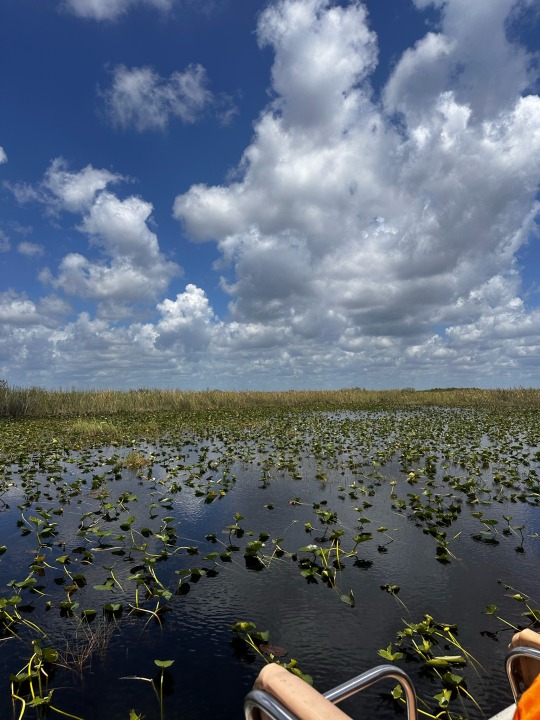
Pa-Hay-Okee, “Grassy Waters”
Pa-Hay-Okee is the Seminole-Mikasuki name for the Everglades. I was blessed to be able to take a trip to see the Real Florida when I took an airboat ride with Buffalo Tiger Airboats, owned and operated by Betty Osceola. Betty is a conservationist and member of the Miccosukee tribe, located in the Eastern Everglades. The Seminole and Miccosukee are the descendants of various groups of Florida’s Original People from all over the state. The relationships and history of Florida’s Indigenous groups is complex. Before colonization and to this day we have had multiple groups who all have different beliefs, cultures, origins, and relationships. Today, we have various groups who are federally recognized as well as both Traditional and Reconstructionist groups who don’t seek recognition from the government, the most well-known being the Traditional Seminoles in Big Cypress.
Certain aspects of Seminole culture predate colonization, like the Chickee and some hunting techniques, while others, mainly linguistic and spiritual, are the result of groups joining together or adapting to new circumstances, such as patchwork. Many of the Seminole can trace their ancestry to groups in North Florida and surrounding states. These groups would live in various parts of the State, including the Everglades, at different times of the year following routes taken by seasonal migrations of game and water.

These people were forcibly removed, pushed South or murdered so their land could be taken in a conflict known to the United States as the First, Second and Third Seminole Wars. As they were pushed South, they encountered and assimilated various remaining populations of Pre-Columbian groups like the Calusa and Tequesta.
If you ask the modern members of these tribes, they will tell you it was a single war that is still being fought to this day, although with lawyers instead of weapons. You see, the Seminole and Miccosukee still have never signed a treaty with the US, and continue to have to fight for their Sovereignty and Land to this day. This has earned the Indigenous People of Florida the title of the Unconquered Peoples. Today, the tribes maintain traditional ways while also dealing with ever-encroaching settler beliefs and people. They still live off the land, but through the lens of eco-tourism most often rather than through subsistence living like many elders lived in their youth.
On my airboat trip, I got to stop and walk around Tear Island, a place where two Indigenous families began living in the 1800s and then abandoned in the 1920s. Being on these far off Islands, surrounded by the swamp and only accessible by boat, is where I feel most connected to my own Indigenous Taino ancestors, who would have traversed this same place but in a dugout canoe rather than an Airboat. The spirits of generations of people who lived and passed on are still here, within the water and trees, but also gathering around the cooking chickee when a fire is lit by their descendants.
High Tide at Chokoloskee
Known as the Western Gateway to the Everglades, we have Everglades City. It borders the Big Cypress Preserve and is a great place to stop to visit the Museum of the Everglades. The first settlers came here in the 1800s, it was incorporated in 1923. Past Everglades though, lies Chokoloskee. An Island with a Seminole name meaning ‘Old House’. This Island was only reachable by boat until 1956 when the bridge was built. John Weeks, the first permanent settler of Naples was one of the first settlers here as well. Before that, it was inhabited by the Calusa for more than 1,500 years.

Stop by HavAnnA Cafe on your way to the southern tip of the Island where you’ll find a large red building on stilts. This is the Smallwood Store. Founded in 1906 by Ted Smallwood, this store was one of the only places Indigenous and White Floridians could go to trade for necessities. Ted Smallwood was a well-known ally of the Seminole and Miccosukee peoples, even learning to speak the language. Today, his granddaughter runs the store which is a museum and gift shop. There is even a replica of Ted himself, pictured above.
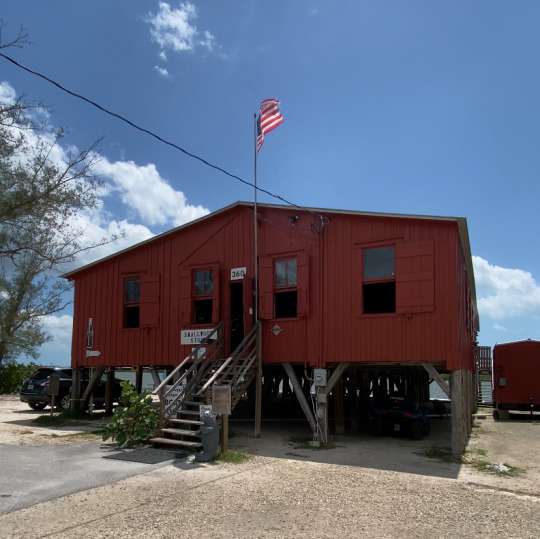
This history of this store and island is long, and tragic. A nearby massacre during the ‘Third Seminole War’ caused the remaining Indigenous people here to flee the Island. Later on, a famous murder of a well known criminal happened right outside the Smallwood Store. You can read more about both, and the 100 year anniversary of the building being raised here.
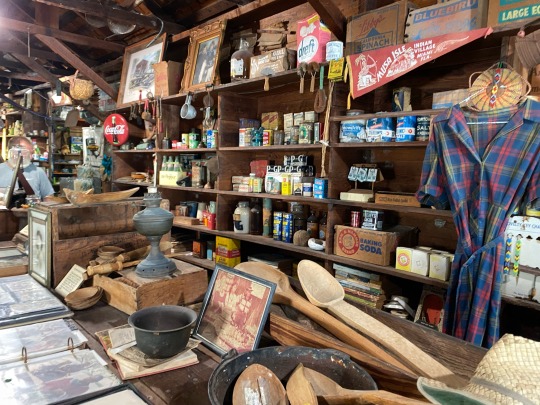
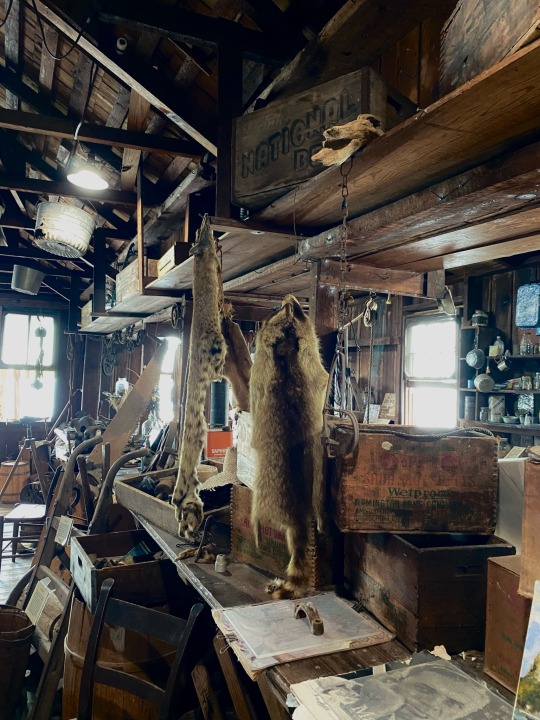
This is also a great spot to see where the fresh water of the Everglades meets the saltwater of the Florida Bay. Definitely give this place a visit.

Splitting Storms: An Indigenous Folk Protection Charm
For some time now, I have noted the striking similarities between Seminole and Taíno beliefs around Twins and Weather. We even share a simple protection charm to ward off a bad storm I will share to you all.
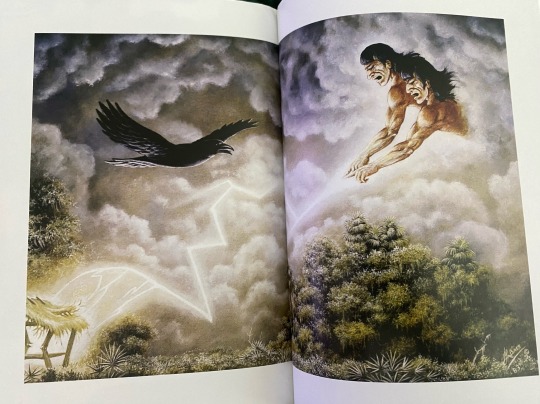
In Seminole belief, Twins are intrinsically tied to the weather. Many elders believed that keeping twins together can be dangerous, and they should be raised separately. To them, one is Thunder and the other is Lightning, even going as far to saying that having two twins in the same chickee can cause it to be struck.
In Taíno myth, we have two sets of twins associated with weather. Boinayel and Marohu are the Cemi related to the Wet and Dry seasons, Boinayel being the Raingiver and Marohu literally meaning “Without Clouds”. Then we have the ones who I would say share similarities to the Seminole Twins, Coatrisque and Gautaubá. These are Twin sons of the violent aspect of Atabey, known as Guabancex, Cacique of winds. Coatrisque is torrential rains, while Guatauba is Thunder and Lightning himself.
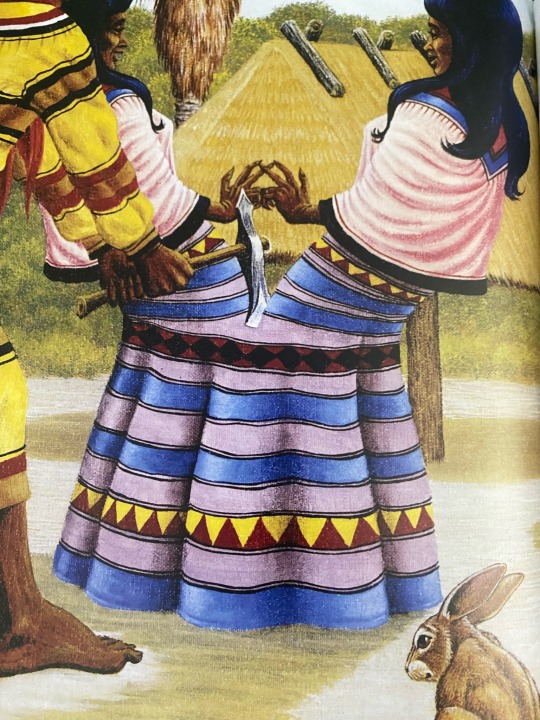
The charm is very well documented in both groups, as well as many others, and very straightforward. It’s the underlying belief that makes these two charms so similar. The linked article from earlier even includes a brief explanation of it.
Basically, when you know a big storm is coming, you want to place an axe in a spot on the front of your house, usually on a piling or piece of the roof that extends below the ground. Tie it down if you wish, for the winds. If you can, do it so the blade looks like it is coming down on the storm. The goal is to split the storm so it goes around the house. If we look at the myths, it’s clear the axe is there to split the Twins from each other, forcing them to go around the house, leaving it protected.
In the Caribbean, in practices like Lúcúmí and Palo Monte, we see the use of Matari, ‘Thunder Stones’. Genuine thunder stones from the Caribbean are actually said to be relics of Taíno axes, shaped like a tear drop almost, either passed down or found and used for various purposes, one being to ward off Lightning and Thunder!
Will Your Kids Know the Glades?
The Everglades are vital to my spiritual practice and lifestyle, as well as that of thousands of other Floridians. Even if you don’t live in the Swamp, its health affects the entire country.
Today, the dangers facing the Everglades are almost as abundant as the dangers inside it. Overdevelopment threatens the entire state. Just like we saw with Split Oak Forest recently. Environmental Protections seem to mean less and less because they don’t have the teeth to defend themselves. Included in these threatened protections is the sovereignty of the Seminole and Miccosukee Tribes, who just had to fight to keep Big Cypress as a preserve so they can continue their traditional use. They are fighting to hold onto their Land to this day.
All while threatening the Traditional Use by Indigenous Peoples, they continue to allow oil drilling even approving new projects within Big Cypress. The Army Corps of Engineers also heavily harms the environment every year through mismanagement of Okechobee and of the water levels within the Glades. It is up to everyday Floridians to fight to protect and better manage this precious natural resource before its gone forever. It is up to Witches all over to be stewards of our Lands, wherever that is. For us Florida Witches, we need to organize, donate and hex our politicians.
Luz 🕯️
#witchcraft#florida#bioregional animism#bruja#brujeria#florida witch#santeria#swamp witch#witch#traditional witchcraft#folk witchcraft#folk magic#folkloric witch#folk witch#espiritismo#santería#caribbean#everglades#animism#taino spirituality#taino#indigenous#cuban#witches#seminole#miccosukee#big cypress
9 notes
·
View notes
Text

Indigenous names of Caribbean islands.
This list of the indigenous names of the Caribbean islands is a compilation of the indigenous names that were given by Amerindian people to those islands before the Europeans started naming them. The islands of the Eastern Caribbean were successively settled beginning with Trinidad at least around 5000BC, long before European arrival in 1492. The Eastern Caribbean islands were dominated by two main cultural groups by the European contact period: the Arawaks and the Kalinago, or Caribs. Individual villages of other distinct cultural groups were also present on the more southerly, larger islands. The large island of Trinidad in particular was shared by both Kalinago and Arawak groups.
8 notes
·
View notes
Text

In 1946, Argentina introduced twenty beavers (Castor canadensis) to Tierra del Fuego (TdF) to promote the fur industry in a land deemed empty and sterile.
Beavers were brought from Canada by Tom Lamb, [...] known as Mr. North for having expanded the national frontier [...]. In the 1980s, local scientists [...] found that beavers were the main disturbers of sub-Antarctic forests. The fur industry had never been implemented in TdF and [...] beavers had expanded, crossed to Chile, and occupied most of the river streams. The Beavercene resulted in apocalyptic landscapes [...]: modified rivers, flooded lands, and dead native trees that, unlike the Canadian ones, are not resilient to flooding. [...]
At the end of the nineteenth century the state donated lands to Europeans who, in building their farms, also displaced and assassinated the indigenous inhabitants of TdF. With the settlers, livestock and plants also invaded the region, an “ecological imperialism” that displaced native populations. In doing this, eugenic and racializing knowledges mediated the human and nonhuman population politics of TdF.
---
In the 1940s, the Argentinian State nationalized these settlers’ capitals by redistributing their lands. [...] In 1946, the president of the rural association in TdF opened the yearly livestock [conference]: We, settlers and farmers of TdF have lived the evolution of this territory from the times of an absent State. [...] [T]hey allied with their introduced animals, like the Patagonian sheep or the Fuegian beaver. At a time when, after the two world wars, the category of race had become [somewhat] scientifically delegitimized, the enhancement and industrialization of animals enabled the continuation of racializing politics.
In 1946, during the same livestock ceremony in TdF, the military government claimed:
This ceremony represents the patria; it spreads the purification of our races … It is our desire to produce an even more purified and refined race to, directly, achieve the aggrandizement of Argentina.
---
The increasing entanglement between animal breeding and the nation helped to continue the underlying Darwinist logic embedded in population politics. Previous explicit desires to whiten the Argentinian race started to be actualized in other terms. [...]
Settlers had not only legitimated their belonging to TdF by othering the indigenous [people], [...] but also through the idea that indigenous communities had gone extinct after genocide and disease. At that time, the “myth of extinction” helped in the construction of a uniform nation based on erasing difference, as a geography textbook for school students, Historia y Geografía Argentinas, explained in 1952: If in 1852 there were 900,000 inhabitants divided in 90,000 whites, 585,000 mestizos, 90,000 [Indigenous people] and 135,000 [...] Black, a century later there was a 90% of white population out of 18,000,000 inhabitants. (357) [...] [S]tate statistics contributed to the erasure of non-white peoples through the magic of numbers: it is not that they had disappeared, but that they had been statistically exceeded [...]. However, repressed communities never fully disappear.
---
Text by: Mara Dicenta. "The Beavercene: Eradication and Settler-Colonialism in Tierra del Fuego". Environment & Society Portal, Arcadia (Spring 2020), no. 1. Rachel Carson Center for Environment and Society. [Image by Mara Dicenta, included in original article. Bold emphasis and some paragraph breaks/contractions added by me.]
#ecology#imperial#colonial#abolition#landscape#caribbean#indigenous#multispecies#temporality#haunted
293 notes
·
View notes
Text

Anaconda remained a advocate for peace to the very bitter end.
🏵️
#history#anacaona#taino#historical figures#hispaniola#native american history#cacica#haiti#dominican republic#womens history#queen#female rulers#royalty#indigenous peoples#jaragua#girl power#caribbean history#female poets#colonization#peacemaker#historical women#royal history#new spain#queencore#1400s#1500s#caribbean sea#nickys facts
12 notes
·
View notes
Note
I just remembered how my friend’s dad told me with a serious face that my tribe is full of cannibals and that there were savages hiding in the woods we lived near. Like wtf. I didn’t know how to respond
Build a time machine, kill Christopher Columbus
#We read some of his stuff in my Monster Studies class#Because of the whole Unknown Cultures are Monstrous theme throughout history#And he's the one who spread the rumour that Caribbean native people are cannibals to justify enslaving them#And it spread to All American Indigenous People are Cannibals myths#And tbf cannibalism does exist in some cultures around the world like on Papua New Guinea#But it's ritual cannibalism#There's this hugely controversial and misunderstood film I like called Cannibal Holocaust#And it's about an anthropologist travelling to the amazon to find a missing documentary film crew#And he finds out they have been cannibalised but then he recovers their film material#And it turns out they tortured and killed the locals to portray them as bloodthirsty savages so they definitely had it coming and were#Actually killed in self defense#And yeah the film is not perfect but it really nails the colonial era myth making still influencing people today#Asks
24 notes
·
View notes